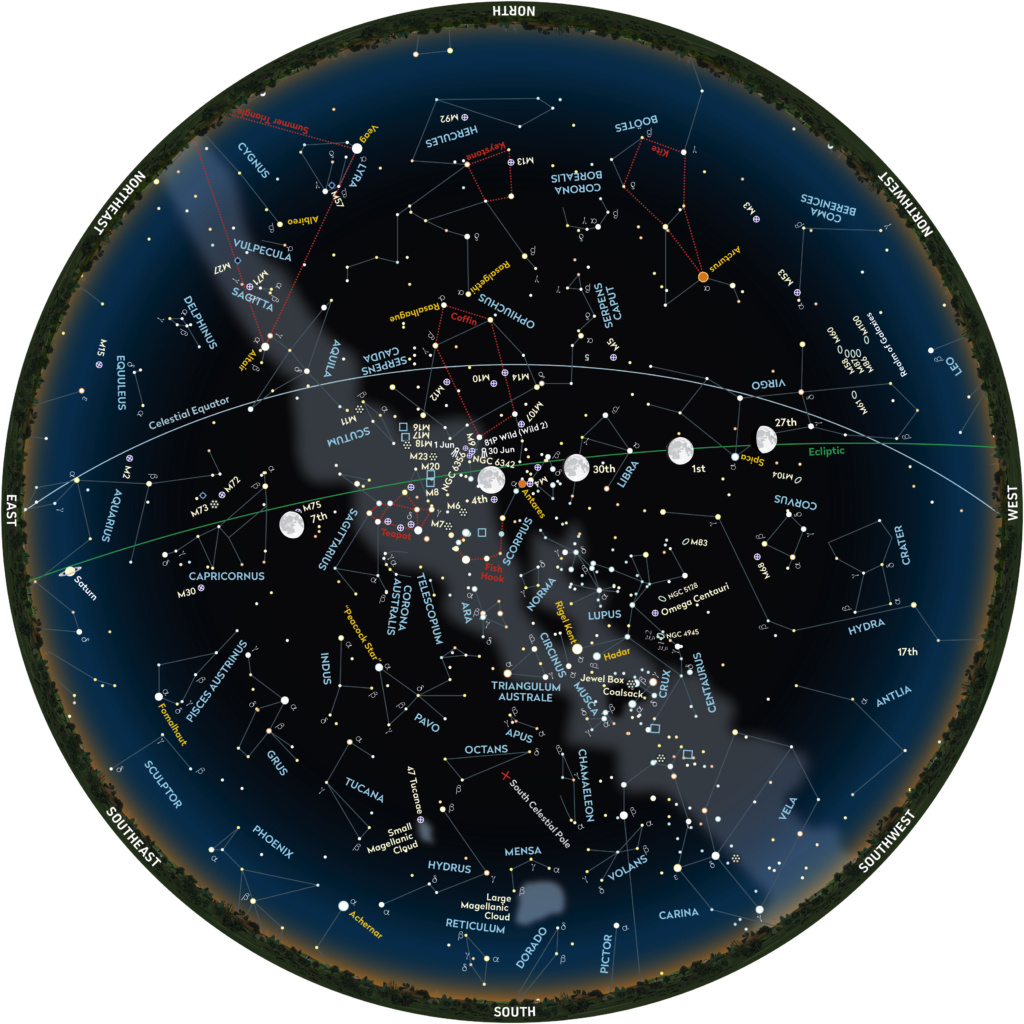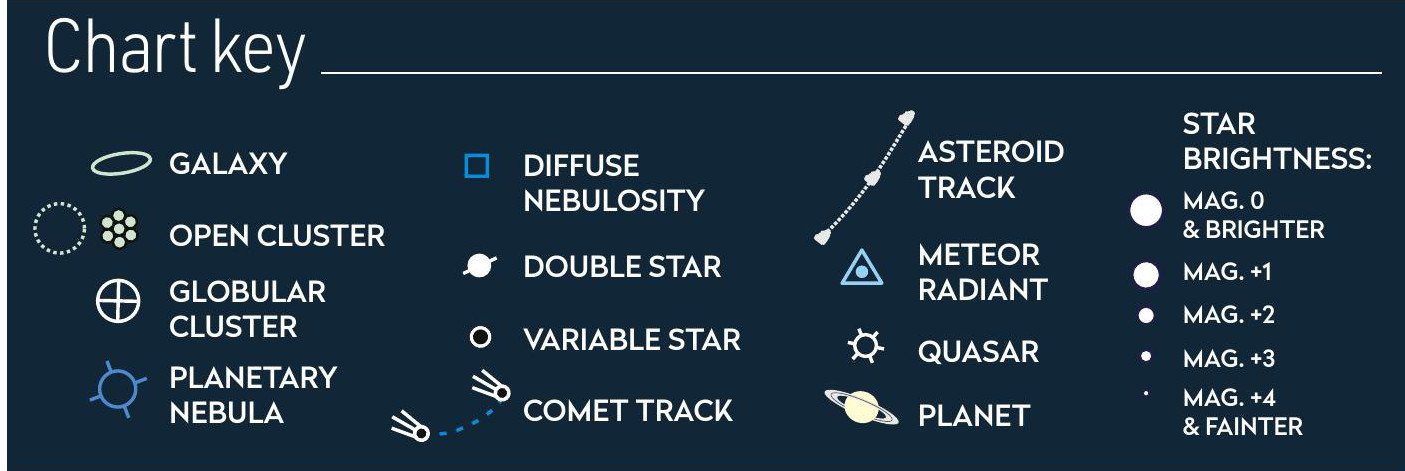Track Comet Wild 2 as it passes three globulars, then get some Pointers and stop for a Hamburger


When to use this chart
1 June at 00:00 AEST (14:00 UT)
15 June at 23:00 AEST (13:00 UT)
30 June at 22:00 AEST (12:00 UT)
The chart accurately matches the sky on the dates and times shown for Sydney, Australia. The sky is different at other times as the stars crossing it set four minutes earlier each night.
JUNE HIGHLIGHTS
Recommended equipment: Large telescope
Comet 81P/Wild 2 is visible most of the night, rising in the early evening in Ophiuchus. Expected to be faint (11th magnitude) it might normally be difficult to track down. However, early in June it makes close calls to three globular star clusters that act as finders. On the evening of the 7th, Wild 2 is 0.5° south of NGC 6356 and on the 10th it’s 1.2° north of NGC 6342. All this time it has been creeping up on M9, being closest on the evening of the 12th, only 0.2° northwest of this bright globular.
STARS AND CONSTELLATIONS
Recommended equipment: Naked eye
Alpha and Beta Centauri are often called the ‘Pointers’, but if you draw a line from the stars towards the Southern Cross (Crux) it passes over the top. Alpha has a high proper motion and is moving towards Beta with this line gradually pointing further south. Around AD 4000 the stars will be about 2° apart (half the current separation), with the line pointing at the centre of the Cross. Alpha will be closest to Beta in around AD 6200 – less than the diameter of the Moon away!
THE PLANETS
Recommended equipment: Naked eye
Venus has reached its maximum altitude above the northwest early-evening horizon. Venus and Mars start 10° apart, narrowing to 4° at month end. On 3 June, Mars passes in front of the Beehive Cluster with Venus following on 14 June. Saturn has now entered the evening sky, arriving around 23:00 mid-month, followed by Neptune around midnight. Jupiter is prominent in the predawn northeastern sky. Uranus is rising before dawn, passing Mercury as it departs from morning skies.
DEEP–SKY OBJECTS
Recommended equipment: Small/medium telescope
Centaurus is a constellation of contrast, ranging from its southern region immersed in the Milky Way environs to its northern area with a more extragalactic flavour. Centaurus is home to the two brightest members of the Centaurus A galaxy group, NGC 4945 (RA 13h 5.4m, dec. –49° 28’) and NGC 5128 (RA 13h 25.5m, dec. –43° 01’). NGC 4945 is located between the fourth-magnitude wide pair of stars, Xi1and Xi2 Centauri.
This distinctive ninth-magnitude, edge-on spiral (22 x 2 arcminutes) looks like a white streak at low powers. Its surface appears mottled, brightening towards its equator, with an ill-defined core. In contrast, seventh-magnitude NGC 5128 (also known as ‘Cen A’) appears roughly circular (15 arcminutes) with a prominent wide, dark equatorial band cutting the galaxy in half, leading to its nickname, the Hamburger Galaxy.